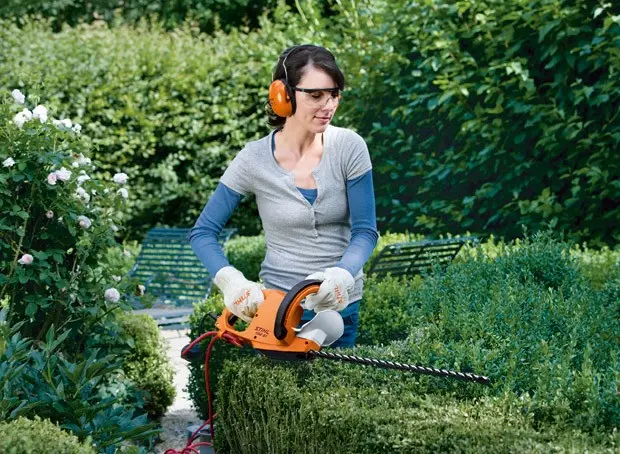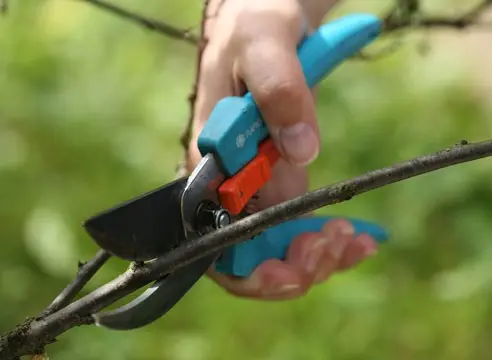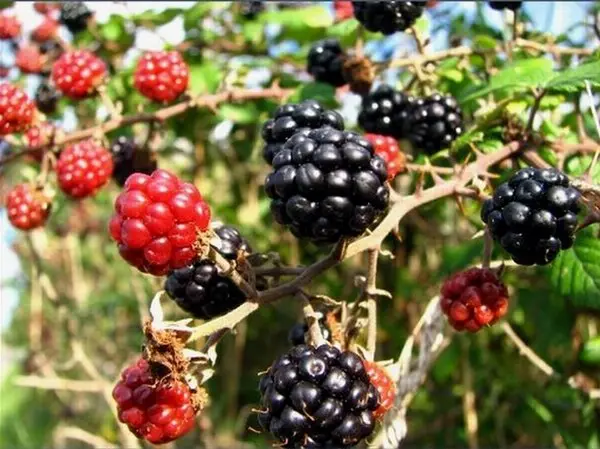Contents
Experienced gardeners know that there are tricks that help regulate the growth of horticultural crops and the degree of their fruiting. Crown shaping, pruning of trees and shrubs are like surgical interventions in the natural development of your fruit crops, but they are very important. What tools will be required for pruning, what types of pruning is it divided into, how to prune shrubs in autumn, winter and spring?
Types of tools
So that pruning garden trees and berry bushes does not cause severe harm to the condition of your crops and is as comfortable as possible for you, you should use a high-quality cutting tool. The main tool for proper pruning is a secateurs. If you are the owner of a young garden, then at first it will be enough for him. In order to rejuvenate trees and shrubs, sawing branches with a thickness of more than 50 millimeters, we recommend purchasing a garden saw. Another name for it is a garden hacksaw. To perform planned actions in hard-to-reach places, inside bushes, we recommend having a delimber on the farm.

The requirements for working tools that will be used for pruning fruit bushes are not difficult. They must be sharp enough to make even cuts. Safety and comfort during operation are important. A secateurs or lopper should have tapered ends that will help you get to branches that are too far and high. Having a small dead weight, the tools must withstand any force. The handle should not be slippery to the touch, preferably.
Secateurs cut branches up to 25 millimeters. There are two types of them – the bypass one has a convex blade that slides on the surface of the concave one, the pruner with an anvil has a wedge-shaped working blade with double-sided sharpening, it works on the principle of an ax. The secateurs of the first type are recommended for cutting living wood, the second – for dried branches. Thanks to the long handles, a lever is formed that allows you to cut high branches without a ladder.
What are trim patterns?
There are several main types of pruning of horticultural crops – shaping, regulating, rejuvenating, restorative. Pruning is also carried out in case of detection of diseases, freezing of branches. The main task of pruning shrubs, regardless of its species, is to increase productivity or decorativeness, to maintain horticultural crops in a healthy state.

Sanitary pruning is a simple undertaking. Sanitary pruning is carried out in order to improve the health of the trees. It does not require a lot of knowledge or experience to carry it out. When carrying out sanitary pruning, it is necessary to remove dried, damaged, incorrectly located branches – which cross or form an angle. When carrying out sanitary pruning, shoots that interfere with the leader and skeletal branches are also removed.
Maintenance pruning is needed to keep active plant growth down. Pruning trees and shrubs of this type is relevant for fast-growing crops. It is necessary to remove old and non-flowering branches to rejuvenate the plants. Other types of pruning will require certain skills and knowledge.
Formative or structural pruning is carried out to create a beautiful and durable crown. You need to think about what you want to get in the end – tiered leader, leaderless, weeping, and so on. Pinching of non-lignified tops is carried out to curb unnecessary growth of shoots during the period of slowing down their growth.

Solid pruning or shearing is carried out without taking into account individual branches, you need to cut off the tops. Shearing is carried out with garden shears or a trimmer to give the plant the intended shape. This creates a dense surface for beautiful hedges. A technique is used in topiary art, and to remove shoots that are no longer flowering. A continuous image is less common than other species, it helps to care for berry bushes and semi-shrubs. Cut off to 1/3 of the annual growth, the result is decorative green pillows.
Among the types of pruning, anti-aging or restorative pruning is distinguished. It activates the growth of crops by the appearance of new shoots, correction of crown defects, and treatment of damage. During the course, thick branches are also removed. They leave the base and skeletal branches, on which buds appear and later new shoots form. Among all types of pruning, this one is carried out for an adult garden. Proper pruning of fruit bushes will help improve crops, make them beautiful and get a high yield.
Video “Harvesting shrubs according to all the rules”
Pruning in winter and spring

In winter, pruning of the garden is carried out in December – February. During this period, the trees are at rest. In winter, crown pruning does not seriously affect the condition of crops. The advantages of removing extra branches in winter are the ease of cutting off a frozen crown and an increase in the quality of the cut – unlike in spring or summer. The absence of leaves will help to consider the state of the crown, determine the degree of processing and choose the right tools. What is more difficult to do in summer or spring. You can work using a ladder to reach the top.
In the spring, the procedure is carried out in late March – early April. This is a favorable time for the artificial formation of the crown. The winter period is already passing, but the cultures are still in a dormant state. Before carrying out the procedure, it is important to pay attention to the behavior and changes in the weather. Sometimes work should start closer to the first days of March, sometimes – in mid-April. Summer pruning is easier to carry out – during this period it is most often warm, the likelihood of frost is excluded. If the spring pruning was carried out correctly, then in the summer the bush will be normally formed. That is, by the summer period it will be evenly covered with inflorescences.
Works in autumn

In autumn, the crown is formed by artificial pruning. In autumn, work is planned for the end of October – the beginning of November.
In autumn, processing should be carried out in a gentle mode. It is from the careful processing of crops in the fall, and not summer pruning, that a good harvest depends. In autumn, shoots affected by fungal infections are removed. Even in autumn, shoots of berry bushes and fruit trees, dried up in summer, are removed. In the fall, work will require knowledge and experience. Gardeners themselves choose whether to prune in the fall or in the winter-spring period. Experts insist that it is important to carry out the pruning procedure at all stages of the development of horticultural crops – in autumn, in winter and other periods of the year.
Video “Pruning shrubs from A to Z”
From this video you will learn how to properly and quickly cut any shrubs or fruit trees without damaging their structure.









